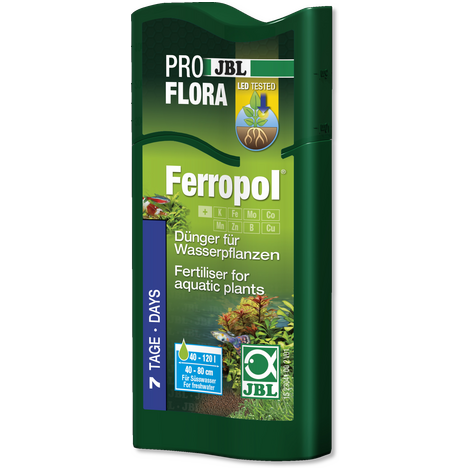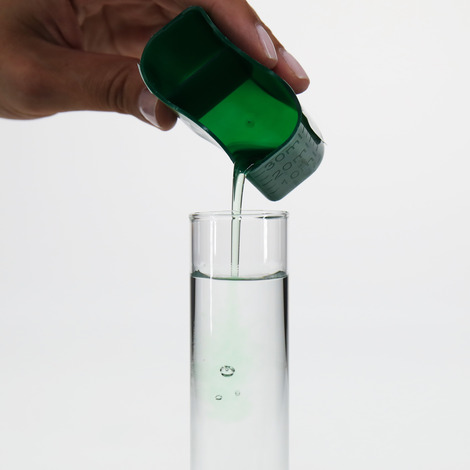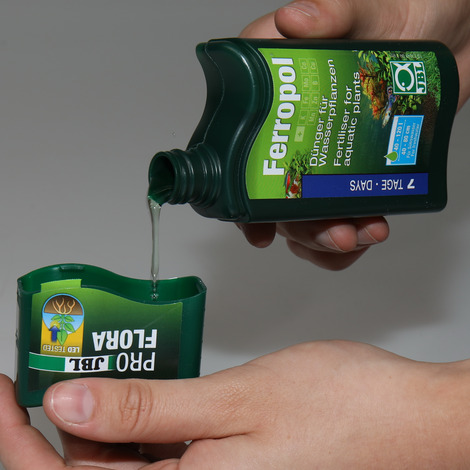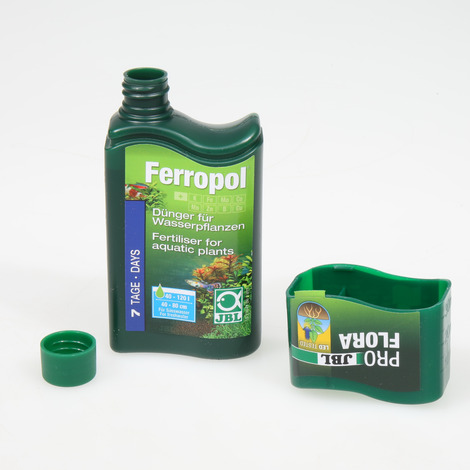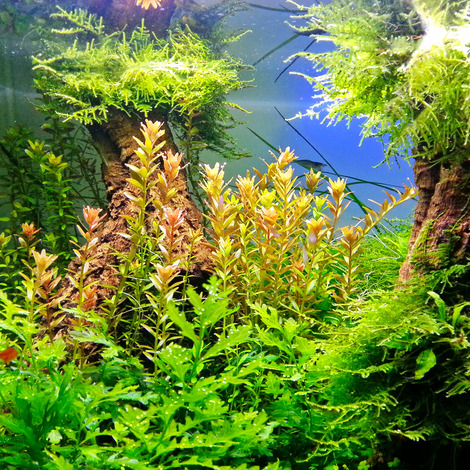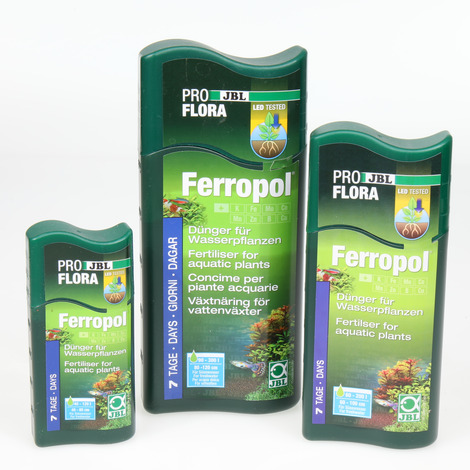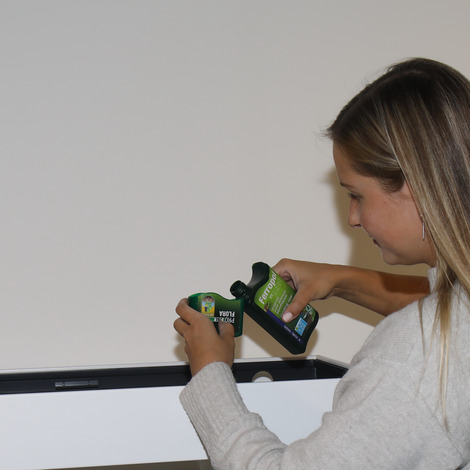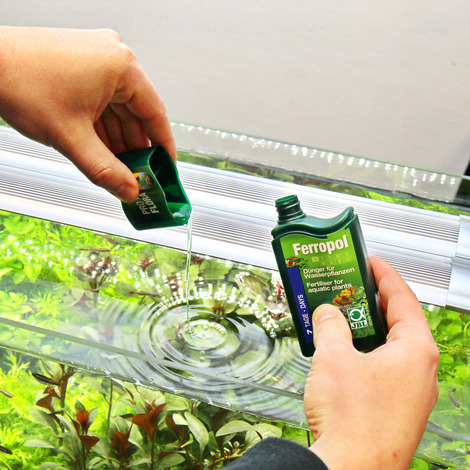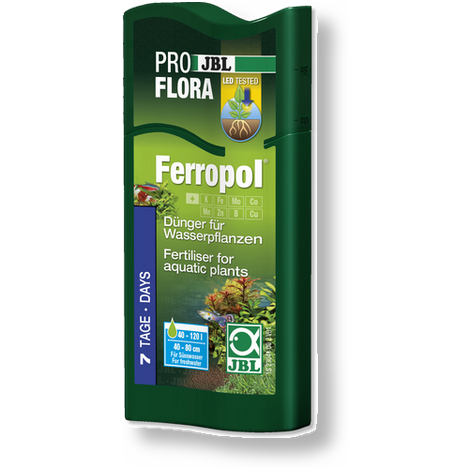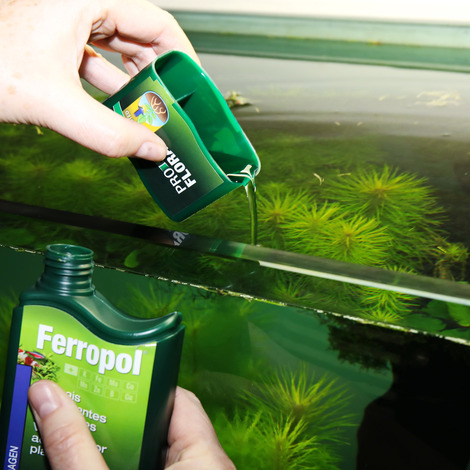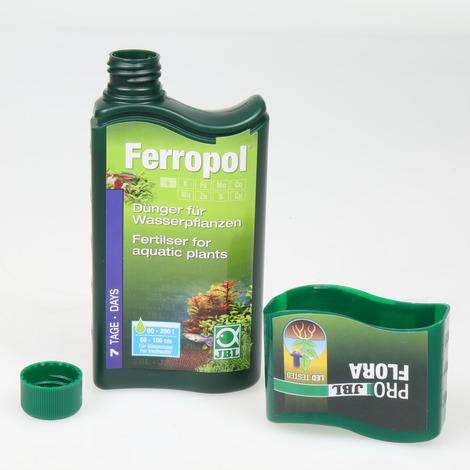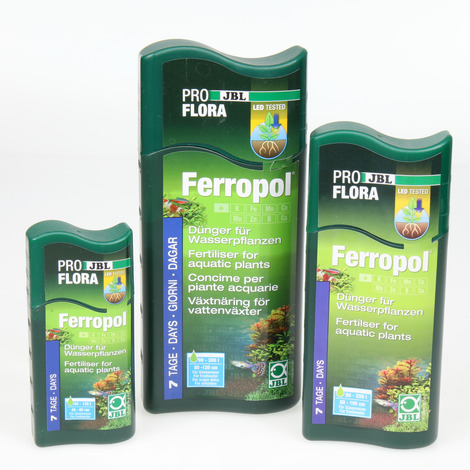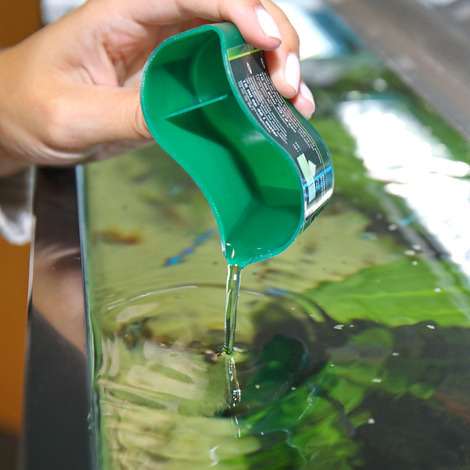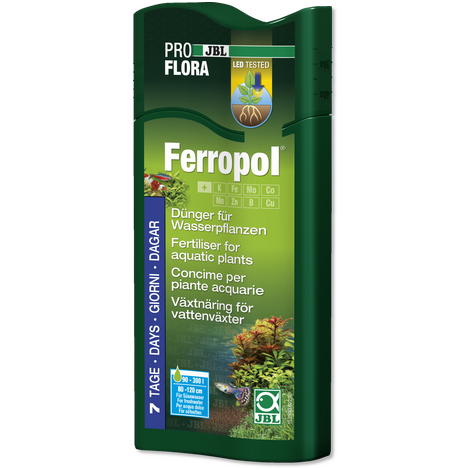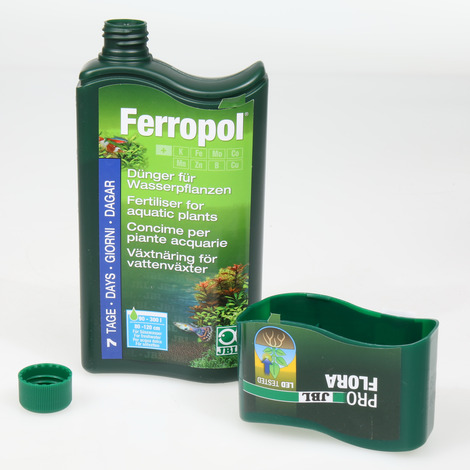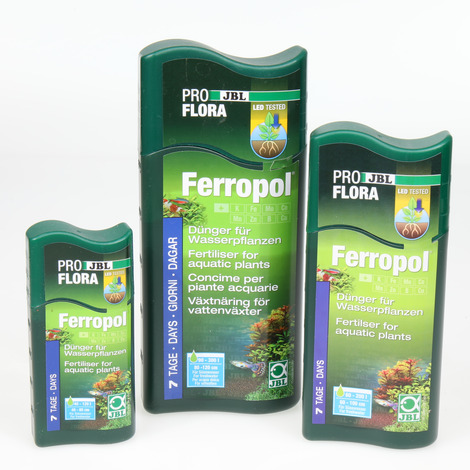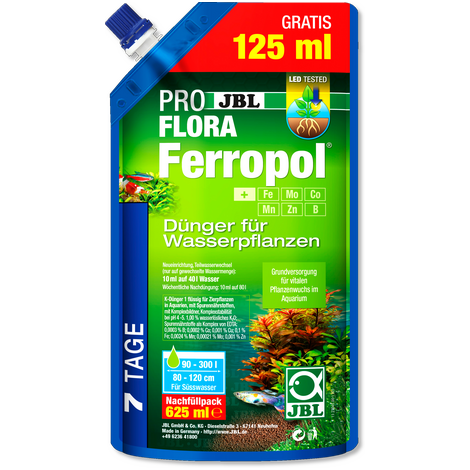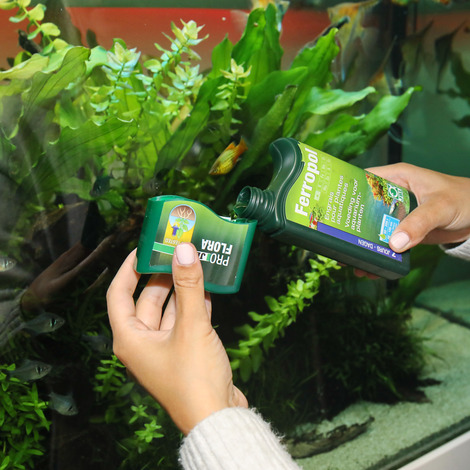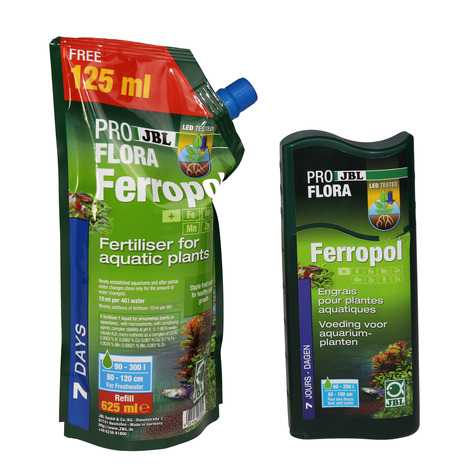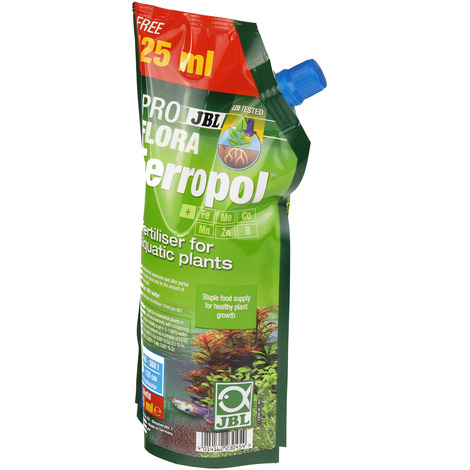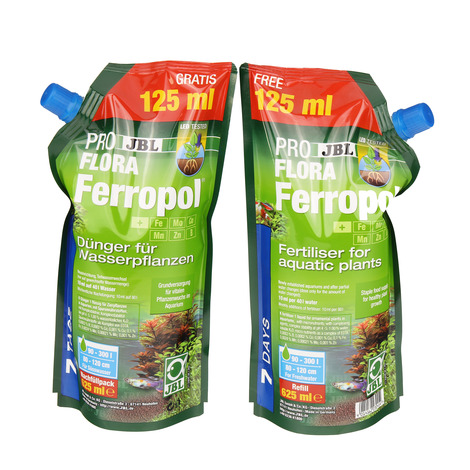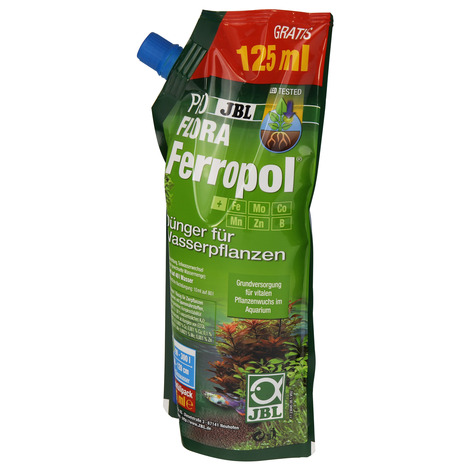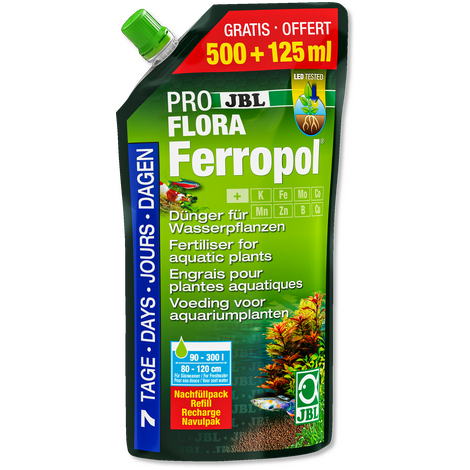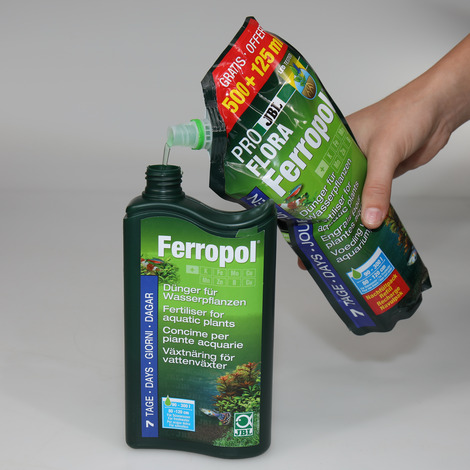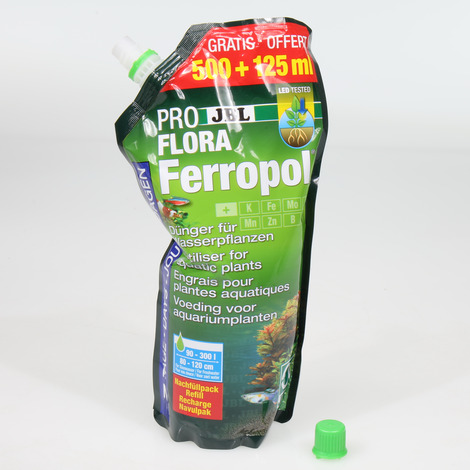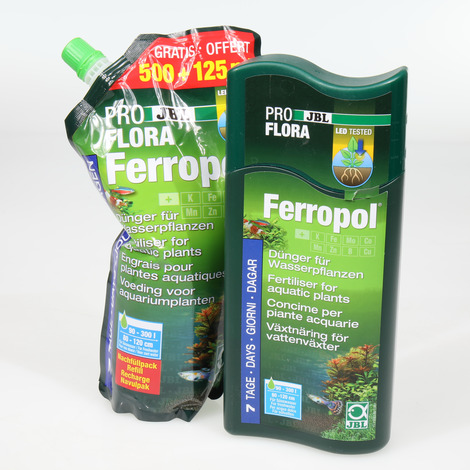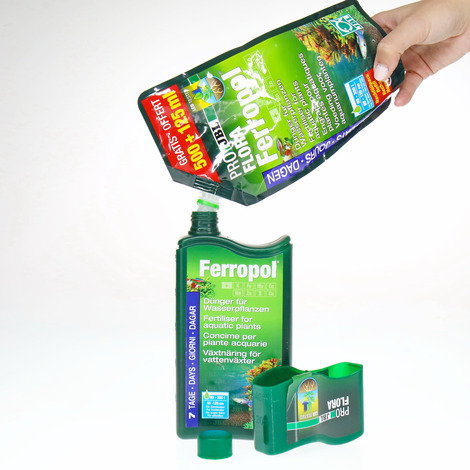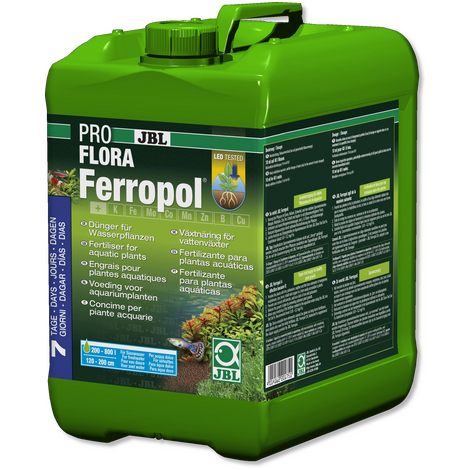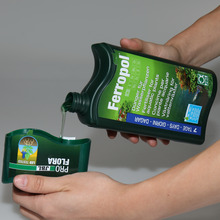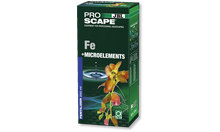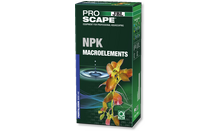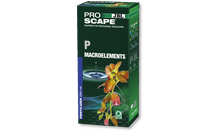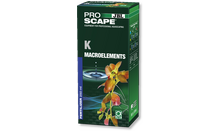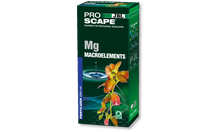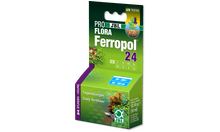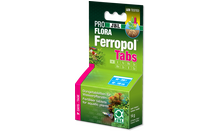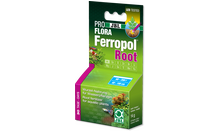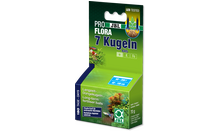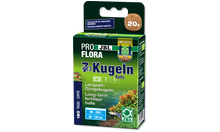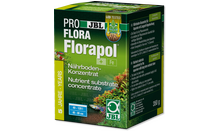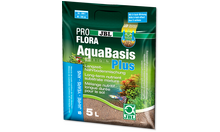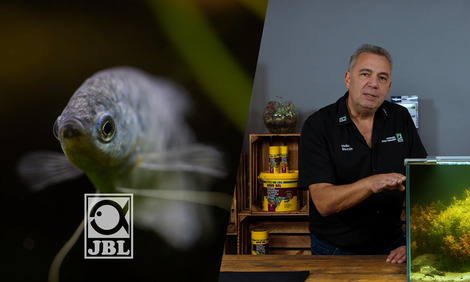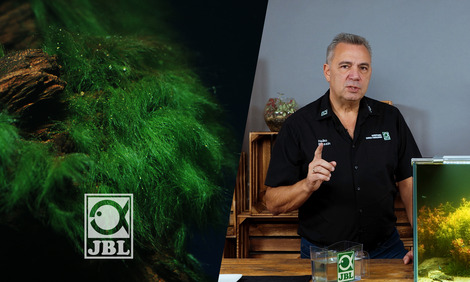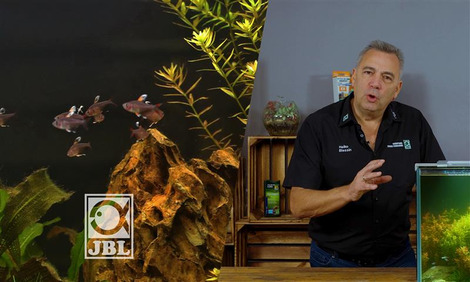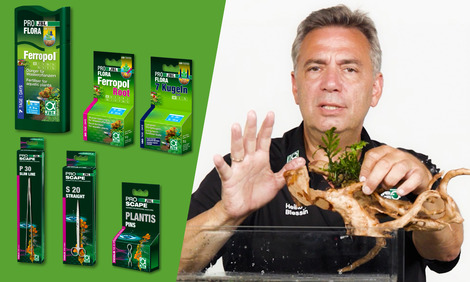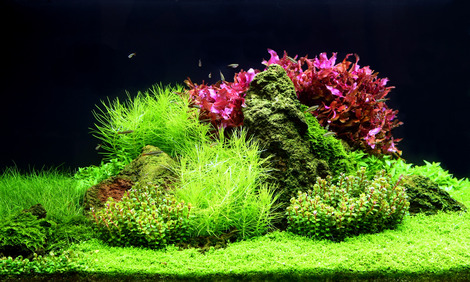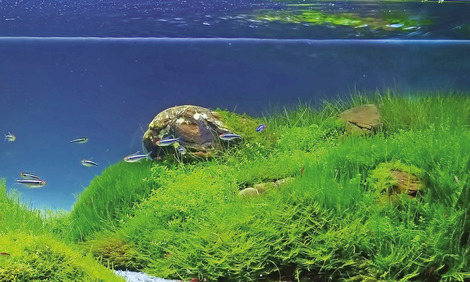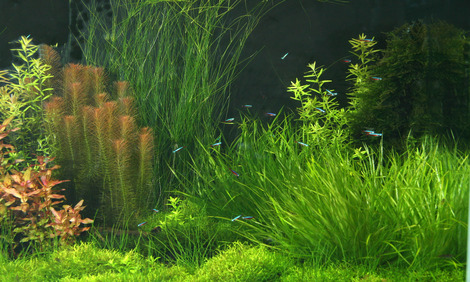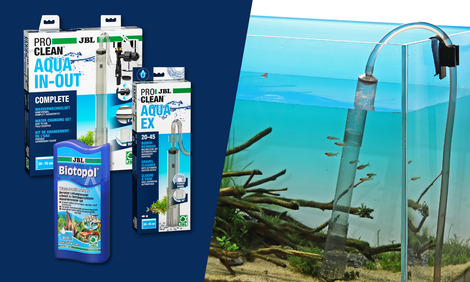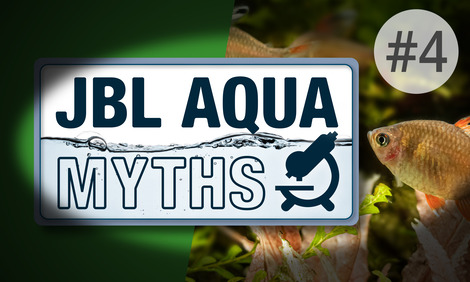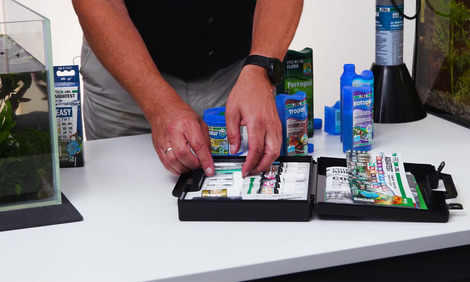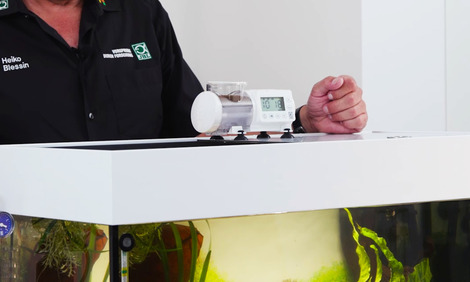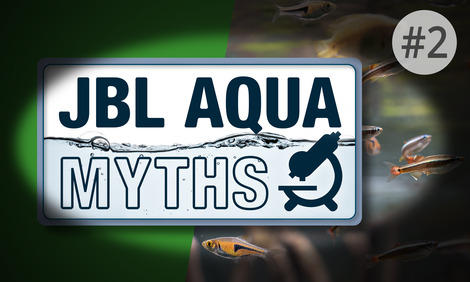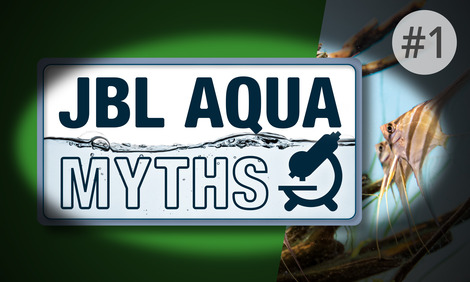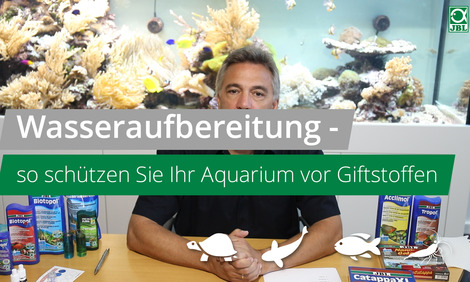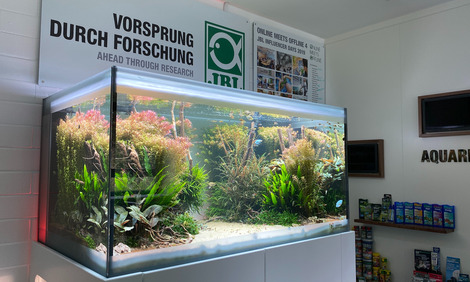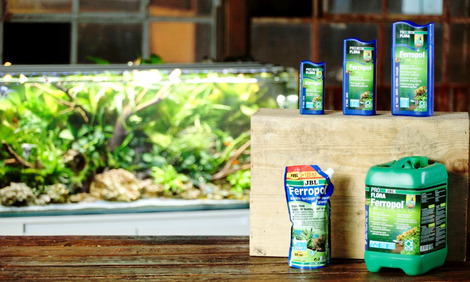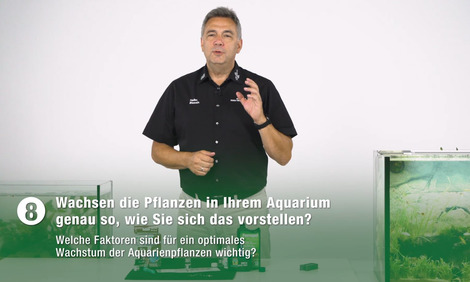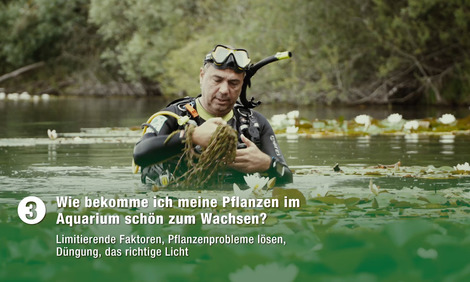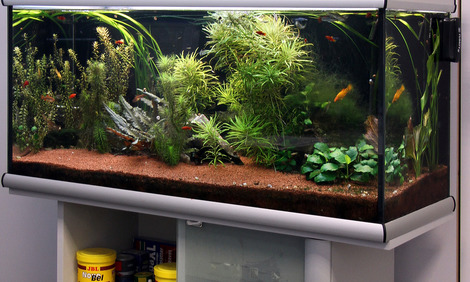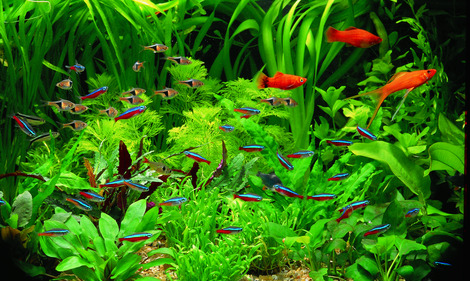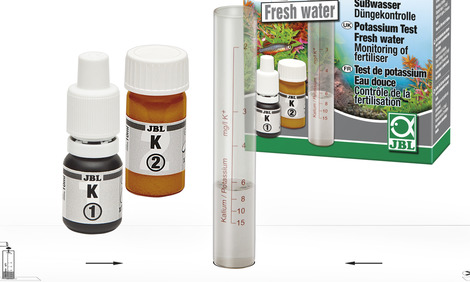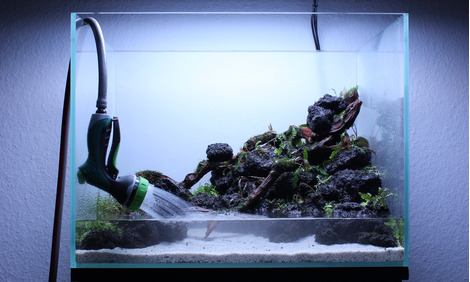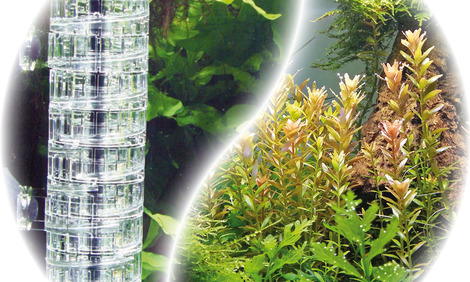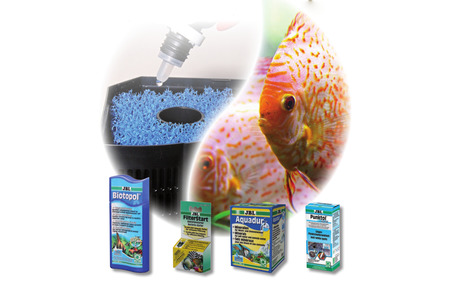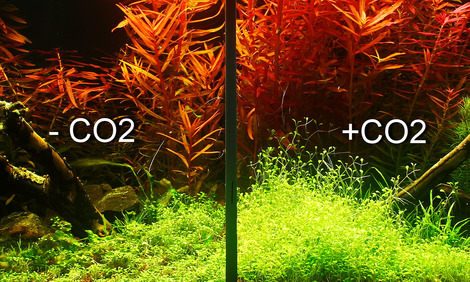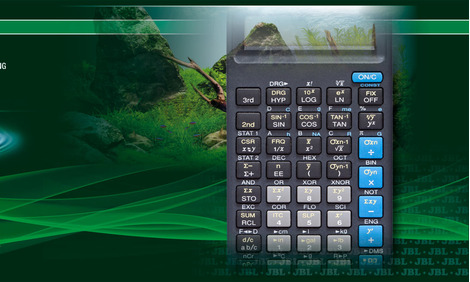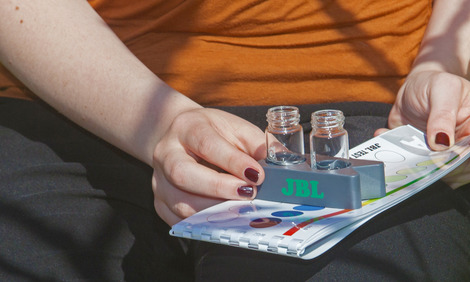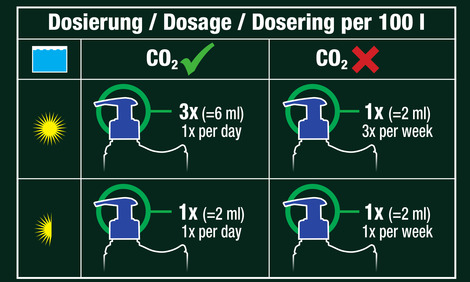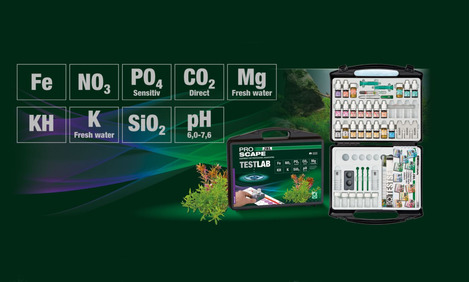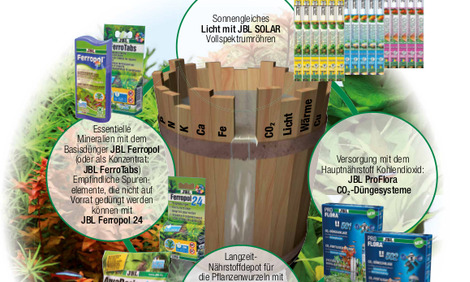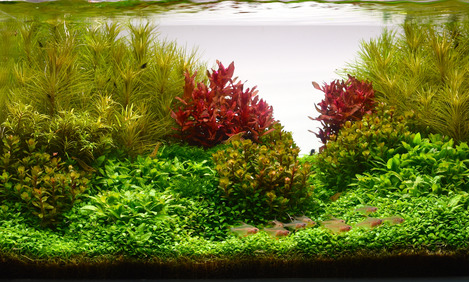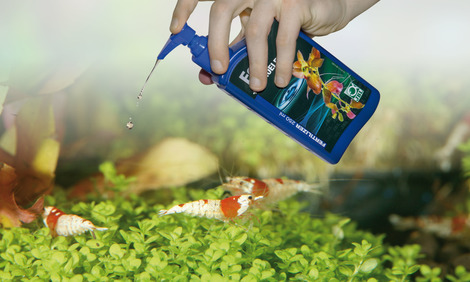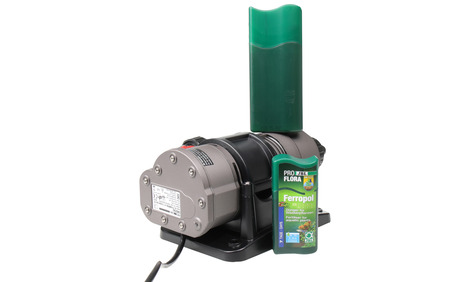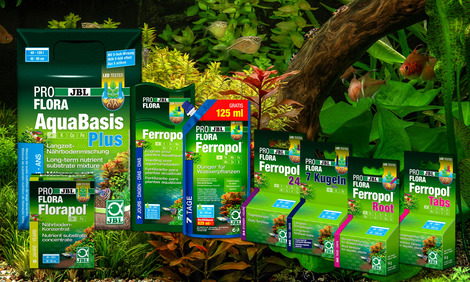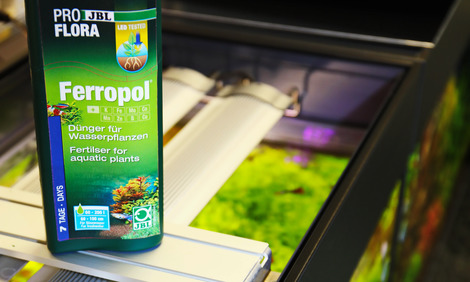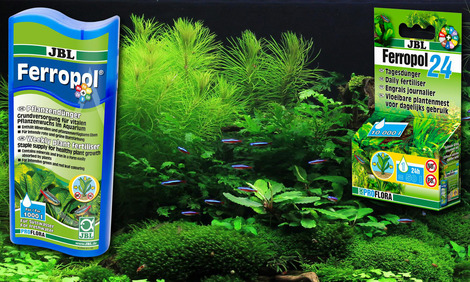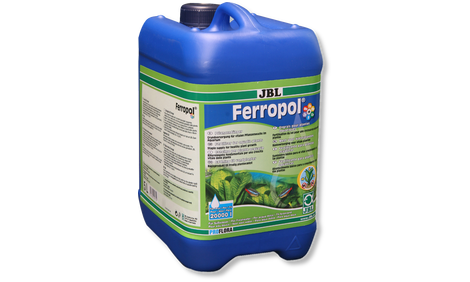JBL AquaCristal UV-C: Does the ultraviolet light destroy active ingredients of my aquatic plant fertiliser?
UVC light degrades the chelators in the fertilizers, which prevent the precipitation of trace elements such as iron, among others. Therefore, when using a UVC water clarifier, it is advisable to change over to daily fertilisation. The standard dose needs to be converted into a daily dose at the beginning. It may also be necessary to increase the fertiliser dose slightly. Iron should be detectable in traces at least prior to each subsequent application of fertiliser. Vitamins and other higher grade organic compounds may likewise be broken down. Therefore, when using vitamins, it is advisable to add the fertilizer with the food twice a week.
Why has my Ferropol turned from olive green or yellow to brown?
The colouring of Ferropol depends on the pH value. During production Ferropol is set to a pH of 4.5. Then the colour is olive green. During longer storage and especially when the bottle has been opened, oxygen from the air gradually penetrates the fertiliser, the pH rises and changes the colour towards a brown tone.
This has no influence on the effectiveness of the fertiliser and its ingredients. You can safely continue to use it.
Where did my algae come from?
Algae problems in an aquarium can never be traced to just one factor or general condition, and instead, are always the result of a combination of different factors, which include light, fertilization, water changes – specifically, how often and how much – feeding, fish population and, of course, the specific water parameters.
According to analyses that were performed over a course of a number of years, red algae, at least the common brush algae and beard algae, occur in descending order at the following parameters:
1) too little carbon dioxide (in relationship to 100 % of the measured tank); the pH level should be in the slightly acetic range, depending on the carbonate hardness, in every case.
2) elevated phosphate levels (over 90 %); phosphate limitation by means of JBL PhosEx ultra is often helpful here.
3) too little and too irregular fertilization (there should always be traces of iron at least).
4) insufficient water changes; a weekly water change of over 30 % is recommended for algae problems.
5) not enough fast-growing plants.
I opened my bottle of JBL Europol two months ago, and now “crystals” have formed. Do I need to dispose of the bottle now?
The bottle of JBL Ferropol is not worthless. Please shake the bottle prior to using the fertilizer and apply it the same way you did in the past.
Our fertilizer has a relatively high concentration, so that individual nutrient salts may form crystals in exceptional cases. As soon as they are in the tank water, they dissolve again and are then as effective as before. The chelated fertilizer components are not affected by this.
I would like to fertilise my plants with your product and change over completely. How do I go about doing that?
Generally, one should never change plant fertilizers abruptly. The fertilizers from different manufacturers have somewhat different compositions in terms of trace elements. This may cause temporary nutrient changes. It is best to change over in 3 steps:
1) Reduction of the old fertilizer by 1/3; replace this with 1/3 of the new fertilizer. Wait approx. 3-4 weeks and observe the reaction of the plants.
2) Reduction of the old fertilizer by 2/3; replace this with 2/3 of the new fertilizer. Wait approx. 3-4 weeks and observe the reaction of the plants.
3) Complete discontinuation of the old fertilizer and change-over to the new fertilizer.
It is important to observe the reaction of plant growth and, in addition, to check the iron content of the water at least 2x weekly. Whereas the value should never drop to 0, it should never exceed 0.2 mg/l if possible. However, short peaks are no cause for concern.
These measures should generally be carried out on a weekly basis, ideally right after a water change. This achieves better results than fertilizing in large doses at longer intervals.
Should the amount of fertiliser be reduced when there is algae trouble ?
A comprehensive answer to this question cannot be provided, as this would require a comprehensive analysis of the water, the fertilisation, lighting and the carbon dioxide supply, plus regular water care.
Although algae can be attributed to an excess of nutrients - particularly phosphate and nitrate in this case, - in many cases, they are also the result of a lack of so-called micronutrients, of which iron is the best known. Very often, this is the deeper cause of the algae problem.
When algae growth occurs, it is generally highly advisable to increase the amount and frequency of water changes, make sure there is a sufficient supply of fast-growing plants and fertilise these with JBL Ferropol or JBL Ferropol 24 in accordance with the instructions.
What’s the best way to deal with brush and beard algae?
1. Increase the volume of water changed each week to about 30-50%.
2. Fertilise regularly after each water change, e.g. with JBL Ferropol.
3. If necessary add a daily dose of Ferropol 24.
4. If algae promoting nutrients (especially phosphate) are present in higher quantities, use e.g. JBL PhosEx ultra to keep them under control.
5. Most important is carbon dioxide. Beard and brush algae are always a sign that there is too little carbon dioxide in the water. If a CO2 system is in use, increase its dosage. Alternatively consider installing a CO2 system like JBL ProFlora u401 or m601.
6. Put in fast growing stem plants as nutrient competitors.
7. If there is strong current, reduce it slightly.
If I am using JBL 7 pellets, does it make sense to also fertilise with JBL Ferropol ?
Yes, that will be helpful and may even be advisable, depending on the plants in the aquarium.
The JBL 7 Balls pellets are primarily intended for root feeding plants and supply the plants with nutrients through their roots. Using JBL Ferropol to fertilise through the water column is generally advisable, as all plants (the stem plants more than the root feeders) also absorb nutrients through their leaves.
Do JBL PROFLORA FERROPOL, JBL PROFLORA FERROPOL 24 or JBL ProScape Fe+ Microelements contain copper, which is harmful to shrimps?
All the ornamental plant fertilisers already mentioned contain copper, which is usual in good trace element fertilisers for aquariums. Copper is an essential trace element for plants and animals.
For shrimps, other decapods and some other animal groups copper is a central atom of the blood pigment haemocyanin, and thus essential for transporting oxygen inside the animal.
The concentration in JBL PROFLORA FERROPOL, JBL PROFLORA FERROPOL 24 und JBL ProScape Fe +Microelements is so designed that all trace elements are available in the required quantities. Not even multiple fertiliser overdosing can harm the shrimps and other decapods.
